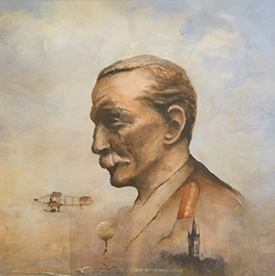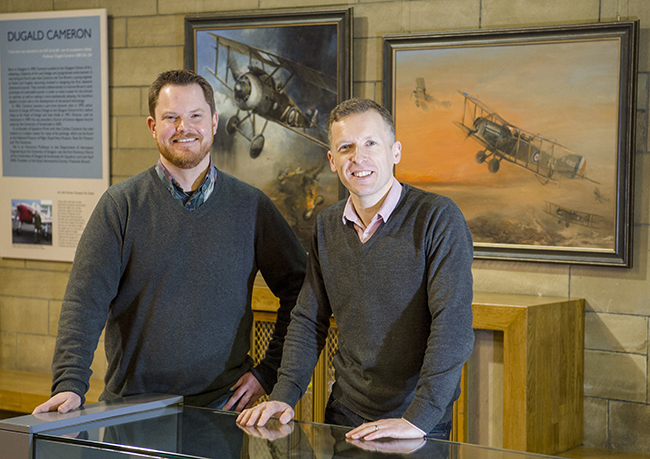UofG's forgotten father of the RAF
Published: 26 April 2018
Find out about the University of Glasgow's extraordinary links with the birth of the Royal Air Force.
Working together staff and students across UofG have created an exhibition of stories about our men and women who helped to found and grow the Royal Air Force over its first 100 years.
A team including members of the Library, School of Engineering, School of Humanities, the Chaplaincy and The Hunterian Museum have highlighted UofG Alumni for a RAF100 exhibition in the Memorial Chapel.
Wings to War: Glasgow and the Centenary of the Royal Air Force traces the history of the RAF through the stories of those who served from University students & alumni to the city of Glasgow connections with the service.
The exhibition also helped to right a historical wrong by highlighting the forgotten father of the service.
Lieutenant General Sir David Henderson, one of the University’s former students who learned to fly at 49, played a vital role in the foundation of the RAF on 1 April 1918. However, his role had been largely overlooked by history until now.

Proud
The exhibition also features stunning paintings of representative aircraft flown by the RAF from 1918 to the present day by Professor Dugald Cameron OBE, one of the UK’s leading aviation artists.
Jesper Ericsson of the Hunterian Museum, who curated the exhibition, said: “Chris MacLure, the exhibition designer, and I, along with Museum Studies student Emily Breedon, volunteered to help put this exhibition together. Former students and alumni played key roles in the history of military aviation in this country, and helped make the RAF the most famous air force in the world. This very special connection is something Glasgow should be justifiably proud of.”
In 1917, Lt General Sir David Henderson was seconded to work with General Jan Smuts who had been authorised to conduct a review of the British Air Services. Sir David largely wrote the Smuts report and his view that there should be a single aviation service was key to the foundation of the RAF.
The Royal Air Force was established in 1918 by the amalgamation of the Royal Flying Corps and Royal Naval Air Service. On the same day, the Women’s Royal Air Force came into being.
Forgotten
Professor Tony Pollard, Professor of Conflict History and Archaeology, said: “It is pretty much a genuine case of being forgotten. Sir David never made much of his role in the formation of the RAF.
“At 49 he became the oldest qualified pilot in the UK and led the Royal Flying Corps when World War One broke out in 1914. This role along with his intelligence work during the Boer War and the effectiveness of balloons in action meant he understood the importance of a unified air force. It is fitting that the University is taking a lead in making sure his role is recognised.”
Moira Rankin, Head of Archives, said: “The UofG’s WW1 project has been about retelling the stories of our former staff and students for today’s audience. But the stories included in RAF exhibition has been particularly special. It has helped to highlight the story of an amazing man – Sir David Henderson. His foresight helped to create a single flying service.”
Reverend Stuart D MacQuarrie, the Chaplain to the University, said: “The University lost 761 members of its community in the First World War. The University Chapel has the names of all of those who died inscribed on its walls. And over the centenary it has been at the heart of the many University First World War events.
“We are honoured to host this very special centenary exhibition and remember those alumni who played such a vital role in the development and history of the RAF.”

First published: 26 April 2018
<< 2018

